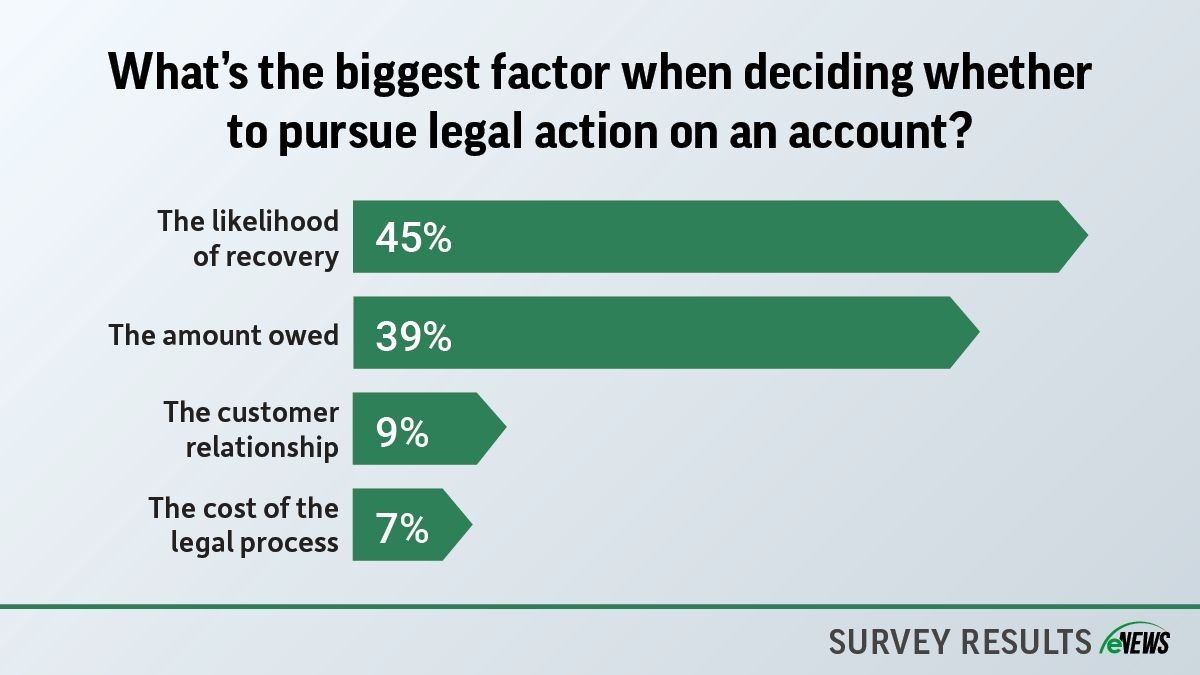Business Practices, eNews
Shifting Workforce Trends and Challenges in Credit Departments
As we usher in the new year, we thought we’d examine the shifting currents of the workforce. Let’s unravel the latest labor trends and workforce challenges identified in eNews poll questions. A recent poll indicated that 32% of credit professionals point to an increased workload as a big challenge while navigating layoffs or workforce adjustments within their credit team closely follow. Maintaining team morale amid the fear of potential layoffs is a challenge for 14% of respondents and another 14% have struggled to hire and retain skilled credit managers.

As we usher in the new year, we thought we’d examine the shifting currents of the workforce. Let’s unravel the latest labor trends and workforce challenges identified in eNews poll questions. A recent poll indicated that 32% of credit professionals point to an increased workload as a big challenge while navigating layoffs or workforce adjustments within their credit team closely follow. Maintaining team morale amid the fear of potential layoffs is a challenge for 14% of respondents and another 14% have struggled to hire and retain skilled credit managers.
The first nine months of the year saw over 13 million layoffs and discharges across the U.S., according to seasonally adjusted data from the Bureau of Labor Statistics. That’s up slightly from the same period in 2022 and 2021 but still below the 2019 pre-pandemic rate of 16 million. “While the labor market is still strong, experts say there will likely be an uptick in layoffs in the coming months,” reads an article by USA Today.
In December, 170,000 jobs were created, according to a report from the Labor Department. “That would be down from November’s 199,000 but in line with predictions for a cooling job market in 2024,” reads a U.S. News article. “The unemployment rate could also tick up from its current 3.7% level.”
“Presently, I have a vacant position with a noteworthy influx of applications, predominantly from individuals with limited experience seeking a career change,” said Scott Dunlap, director of credit and collections at Coleman Oil Co. (Lewiston, ID). “In my previous role before joining Coleman Oil, the division I worked for failed to offer a competitive wage for their geographic location, which was the primary obstacle preventing us from recruiting qualified individuals.”
To navigate this challenge, Dunlap makes sure to optimize and automate processes wherever feasible, provides cross-training and explores potential opportunities within the current staff. “The swift rise in the minimum wage necessitates a proportional increase in credit manager salaries,” Dunlap said.
While some states are on a schedule for annual increases to eventually reach $15 an hour, others still adhere to the federal minimum. “Although the current federal minimum wage of $7.25 (per hour) has not budged since 2009, more than 20 states have provided additional increases in 2024,” reads a Paycor report.
On the other hand, 47% of credit professionals surveyed say they have no recent challenges in navigating layoffs or workforce adjustments. “A pivot in focus to touch even the smallest of balances can help provide cash flow into the business and justify keeping the credit department at full staff,” said Steven Prensner, CBA, senior credit analyst at MasterBrand Cabinets, Inc. (Jasper, IN).
As companies navigate operational efficiency, some are reevaluating workforce structures to ensure optimal task allocation. “Each of our internal team is responsible for certain aspects of the payment cycle, so far we have not had a need to adjust those responsibilities,” said Gweneth Weeks, operations manager at Big D Concrete Inc. (Dallas, TX). “We are looking at a workforce adjustment, however I am turning a part-time position into a full-time position and reallocating duties from one person to another so that we have everyone working their own assigned tasks instead of juggling hats.”
To prevent any challenges in navigating layoffs or workforce adjustments, Weeks has each team member keep a spreadsheet of tasks that they oversee daily, weekly, monthly and by special request. “At the beginning of July, I met with each of them to review their spreadsheets and adjust what they were responsible for to streamline our team and make the workload evenly dispersed. I also advised them to continue adding to the spreadsheet and I would review it again come January 2024.”
To combat increased workload, Weeks advises credit professionals to make sure they have a standard operating procedure (SOP) written out for every position. “You might think you know everything a person handles until you learn about the smaller tasks you don’t see in their day-to-day schedule.”





